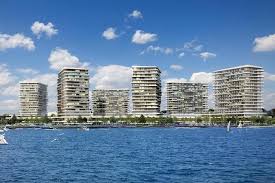Istanbul, a city where East meets West, is renowned for its rich cultural tapestry, historical landmarks, and vibrant neighborhoods. Among its many charms, one element stands out prominently – the myriad shades of blue that adorn the city. From the shimmering waters of the Bosphorus to the intricate tilework of ancient mosques, Istanbul’s blues tell tales of its storied past and dynamic present. Let’s embark on a journey to uncover the seven shades of blue that define this magnificent city.
1. Azure of the Bosphorus
One of the most iconic blues in Istanbul is the azure of the Bosphorus Strait. This narrow waterway not only separates Europe from Asia but also serves as the city’s lifeline. The deep blue waters of the Bosphorus are bustling with ferries, fishing boats, and luxury yachts, symbolizing both commerce and leisure. The Bosphorus has witnessed countless historical events and continues to be a central part of daily life in Istanbul.
2. Cerulean of the Blue Mosque
The Sultan Ahmed Mosque, popularly known as the Blue Mosque, is an architectural marvel adorned with over 20,000 handmade ceramic tiles in various shades of blue. These cerulean tiles, combined with the mosque’s stunning design, create a serene and majestic atmosphere. The Blue Mosque’s interior is a testament to the Ottoman Empire’s artistic prowess and remains one of the city’s most visited landmarks.
3. Turquoise of Topkapi Palace
Topkapi Palace, once the residence of Ottoman sultans, is another treasure trove of blue hues. The palace’s walls and ceilings are embellished with turquoise tiles, adding a touch of elegance and opulence to its grand halls. The turquoise tiles reflect the affluence and sophistication of the Ottoman era, making Topkapi Palace a must-visit for history enthusiasts.
4. Indigo of the Grand Bazaar
The Grand Bazaar, one of the oldest and largest covered markets in the world, is a labyrinth of shops selling everything from spices to jewelry. Among the vibrant colors, indigo stands out prominently. Indigo dyes used in textiles, ceramics, and other goods capture the attention of shoppers and reflect the rich trading history of Istanbul. The Grand Bazaar’s indigo hues are a reminder of the city’s position as a major trading hub along the Silk Road.
5. Cobalt of the Chora Church
The Chora Church, now a museum, is known for its exquisite Byzantine mosaics and frescoes. The cobalt blue used in these artworks adds depth and intensity to the religious scenes depicted. The church’s mosaics are considered some of the finest examples of Byzantine art, and the use of cobalt blue highlights the skill and creativity of the artists.
6. Sapphire of the Princes’ Islands
A short ferry ride from Istanbul, the Princes’ Islands offer a peaceful retreat from the bustling city. The sapphire blue waters surrounding these islands are perfect for swimming, sailing, and enjoying scenic views. The Islands’ serene atmosphere and sapphire blues provide a stark contrast to Istanbul’s energetic pace, making them a popular getaway for locals and tourists alike.
7. Periwinkle of the Spice Bazaar
The Spice Bazaar, also known as the Egyptian Bazaar, is a sensory delight with its array of colorful spices, dried fruits, and teas. Among the vibrant colors, periwinkle blue is often seen in the packaging and presentation of goods. This shade adds an element of charm and allure to the bazaar, enticing visitors to explore and sample the various offerings.
Conclusion
istanbul seven blue (istanbul yedi mavi) seven shades of blue are more than just colors; they are symbols of the city’s rich heritage, cultural diversity, and enduring beauty. Each shade tells a story, from the azure Bosphorus to the periwinkle Spice Bazaar, inviting visitors to immerse themselves in the captivating history and vibrant life of this extraordinary city. Whether you are exploring its bustling markets or admiring its architectural wonders, Istanbul’s blues will leave a lasting impression on your heart and soul.
The Seven Shades of Blue: Uncovering the Mysteries of Istanbul’s Colorful Heritage

Categories:

